The Tower of the Castle of the Bishops of Luni, which stands at the highest point of the Ligurian village of Castelnuovo Magra, on Piazza Querciola, returns to host another exhibition project dedicated to the greats of photography. The Turris Magna, part of what still remains, along with sections of the perimeter walls and another minor circular tower, of the ancient 13th-century castle known for having given rise to Dante’s Peace in October 1306 (the place, therefore, where Alighieri brought an end to a seven-year war between marquises and bishops), has in fact for years been the scene of notable and high-quality photographic exhibitions: starting with a heartfelt and crowded lectio magistralis by renowned U.S. photographer Steve McCurry held in the square in 2015, the Tower’s five floors have hosted shots by Elliott Erwitt, Steve McCurry himself, Bruce Chatwin, Letizia Battaglia, Tano d’Amico, Mario Dondero, Vivian Maier, and Pepi Merisio. Exhibition projects that are the result of amunicipal administration that has dedicated itself with passion and intelligence to a small village like Castelnuovo Magra, and that have attracted about twenty thousand visitors in six years.
After the health emergency forced a stop, the Tower of the Castle of the Bishops of Luni got off to a great start by welcoming the black-and-white shots of Gianni Berengo Gardin (Santa Margherita Ligure, 1930) for the exhibition Gianni Berengo Gardin. Color Distracts. A World in Black and White, open until Oct. 9, 2022 and curated by Elisabetta Sacconi in collaboration with the famous photographer’s daughter, Susanna Berengo Gardin. The title reminds visitors of one of the firm principles of his photography: he firmly believes that color “distracts” from the content, because it leads one to look at the detail and not the whole shot. The photographs on display, like all those he has taken over the course of his practice, are also in analog because they do not need to be edited, and he is keen to emphasize this. Beginning in 2001 he stamps the back of each of his photographic prints with the words, “True photograph, uncorrected, edited or computer invented.” And they have no captions or titles, because “good” photographs need only a place and a date.
“In every single image the narrative is total: the story opens, flows and closes in the space and time of a single photograph,” explains Maurizio Garofalo, who has shared travels and conversations with Berengo Gardin. “It is a rare gift, the capacity for extreme synthesis; it is a search of the gaze that studies, waits, understands and grasps the scene (and the story) in a split second.” For Gianni Berengo Gardin, photography is document; it is a tool that can capture stories and bear witness to something. "Many people tell me I am an artist, but I don’t care to pass as an artist, I am a craftsman photographer," he said. At the center of his shots, as can also be seen from those in the exhibition, is always man cast within places, situations, cultures and his everyday life. Being a photographer is therefore for him to be a storyteller, an aspect that the curator has intentionally highlighted throughout the visit: short texts, one for each floor, offer a personal narrative of the shots that are the protagonists of each section by the photographer himself. Small narratives that accompany visitors and become souvenirs to take home, as reminders of the journey undertaken in the tower’s exhibition spaces through Berengo Gardin’s travel photographs.
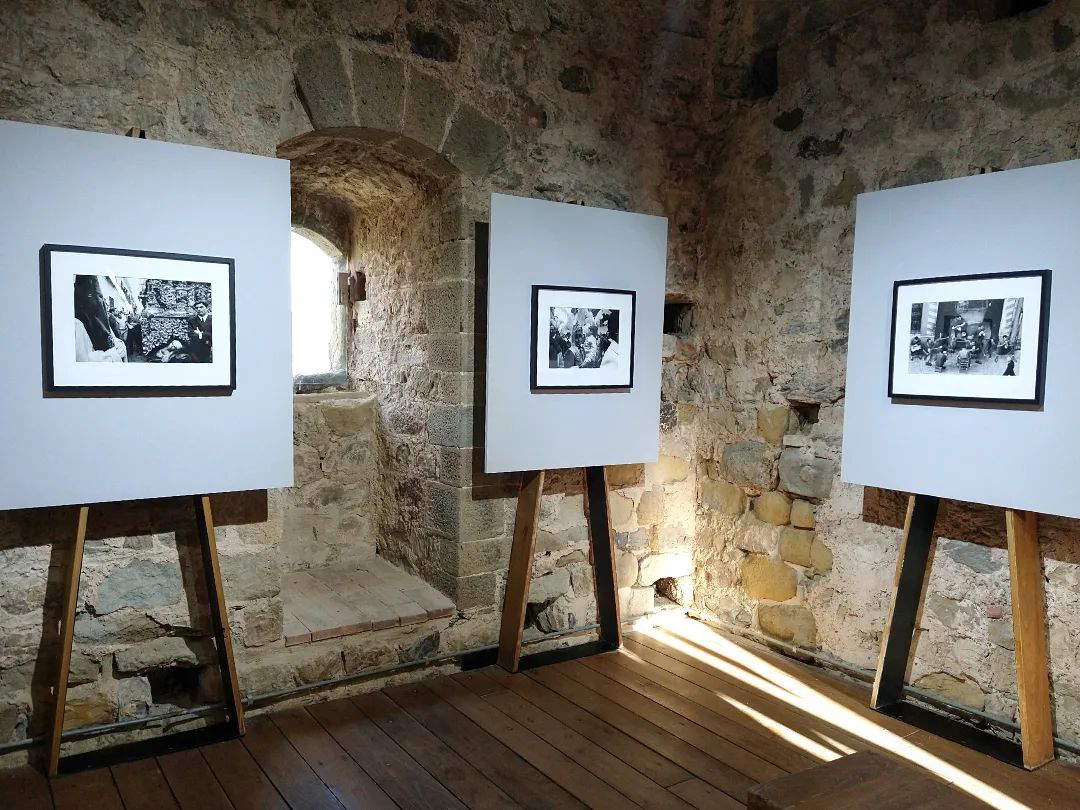
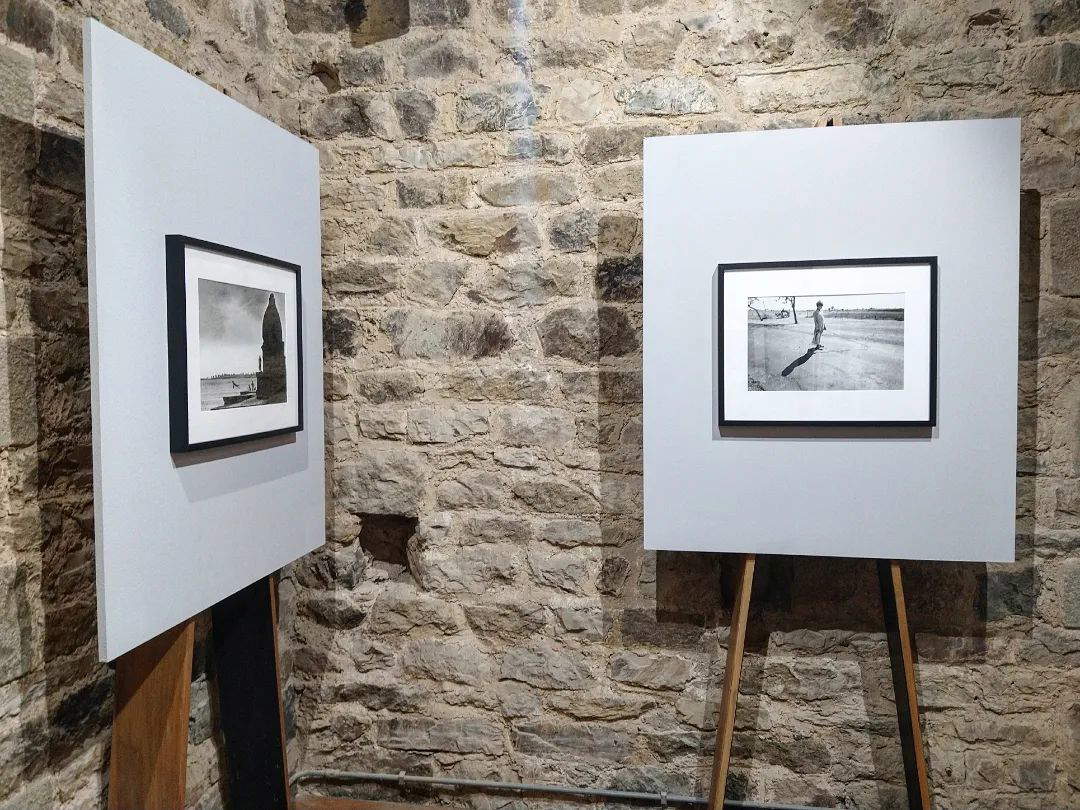

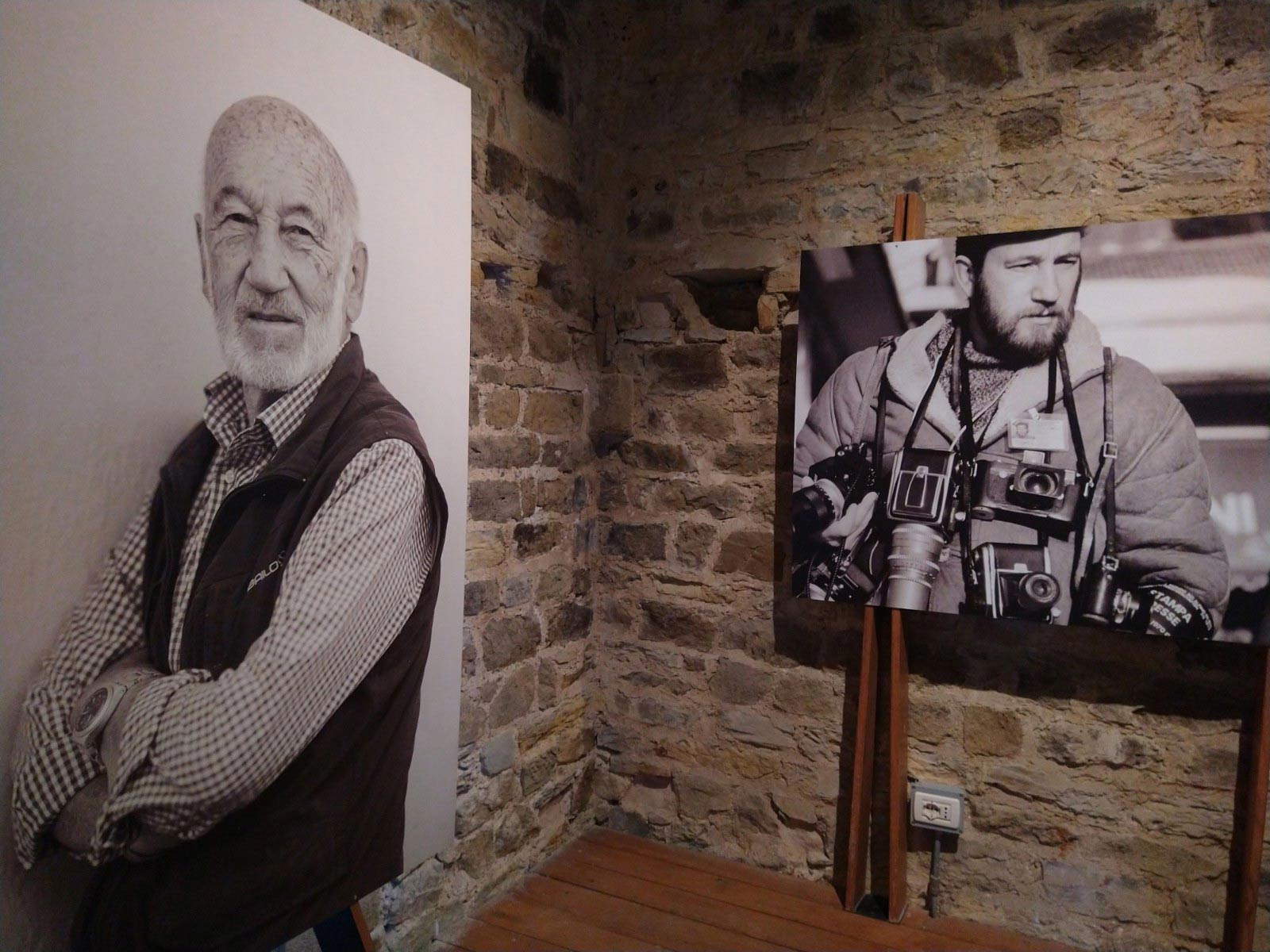
Theunprecedented exhibition, built and conceived specifically for this venue, in fact focuses only on the photographer’s famous reportages abroad: his need to witness something is linked on these occasions to his curiosity to see the world, remembering, however, that he does not want to tell an adventure as an end in itself, but rather intends to give life to a story that becomes a memory of a past that, thanks to photography, has come down to the present. And so each floor is a journey to a precise geographic place; in a chronological sense, but which nothing prohibits the visitor from traveling as he or she prefers, since each place is a story in itself (the only “obligation” is given by the structure of the tower, inside which one goes up and down “climbing” a small wooden staircase that gradually becomes steeper and steeper). Starting from the ground floor and going up to the second floor, one goes to Paris, the city where Gianni Berengo Gardin made his first reportages and where the great French photographers and prominent cultural figures live and work; he is particularly attached to Robert Doisneau and Willy Ronis. The long stay in the French capital from 1953 to 1954 is very important for him because from being an amateur photographer he became a professional. “I worked in the mornings, first as a waiter, then at the front desk of a big hotel, and I had the afternoons free to go around taking pictures,” he says. He likes to linger on every corner of the city and the people he sees on the street. “One of the things that struck me the most were the people quietly kissing on the street, something that was still considered ’outrageous,’” he recalls. And it is precisely that shot that catches the eye of those who begin the photographic “journey” along with other visitors. A bench, a streetcar speeding past behind, and the passionate kiss of a young couple that remains etched here, forever.
We then go to New York, where the photographer went in 1969 with his friend, photographer and journalist Giancarlo Scalfati , with whom he shared his first studio in Milan. He was already familiar with the United States through literary greats such as Hemingway and Dos Passos, but it was during this trip that Berengo Gardin was able to capture the U.S. capital in its normality, reflected, for example, in a child walking down the street wearing a demonic carnival mask or in a group of youngsters disheveled by the wind (note the long, straight hair of a girl caught as it stands up straight in the air), or in passersby crowding the streets of the metropolis. “I was very impressed by the vibrancy of the city, by how many situations it offered to the photographer’s eye at every street corner, and by the ease, I would say indifference, with which people had their pictures taken,” the photographer recounts.



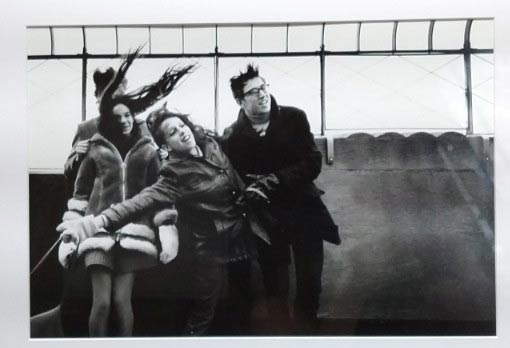 Gianni Berengo
Gianni BerengoIt is in the Spanish section that the public has a chance to see the only previously unseen shot in the exhibition, which depicts workers on their lunch break, sitting on the floor, on a chair, on a crate or on the front of a car that serves as a backdrop to the scene. There is also a photograph of the Holy Week procession in Seville, a shot Cartier-Bresson wanted for his private collection. Berengo Gardin made two reportages in Spain in 1970 and 1973: the first to document precisely the Holy Week in Seville, a popular festival in which citizens gathered in confraternities participate; the second on behalf of the Italian Touring Club to represent mainly landscapes and architecture, but always with the presence of man. These are images of white villages and sunny countryside: one with windmills is very reminiscent of the landscapes of Don Quixote and Sancho Panza, another depicts a white wall contrasted by the words “Christ” and an elderly lady intent with a large basket. These are moments of life taken from pure everyday life.
Going up further one encounters Britain and the famous Morris overlooking the sea, chosen as the exhibition’s guiding image, which enchanted the photographer because it was the only one on a windy day to have two people on board sheltered from the cold. “During this trip I took the photo of the Morris on the cliff, with the two passengers looking out to sea; at the time I did not hold it in high regard, perhaps I did not even print it, but it later became one of my best-known photos,” says Gianni Berengo Gardin. He went to Great Britain between 1976 and 1977 on a commission again from the Italian Touring Club. "I had been particularly happy with the assignment because I was fascinated by the lifestyle of the British,“ he admits. Of England Berengo Gardin is passionate about everything, ”the pipes, the tobacco, the shoes, the clothes, the cars." Even of the strict dress code that requires Royal Ascot participants to wear feathers, hats and tight-fitting suits.
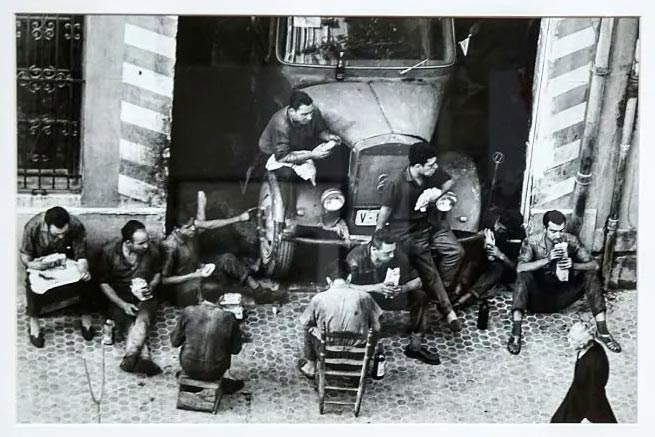
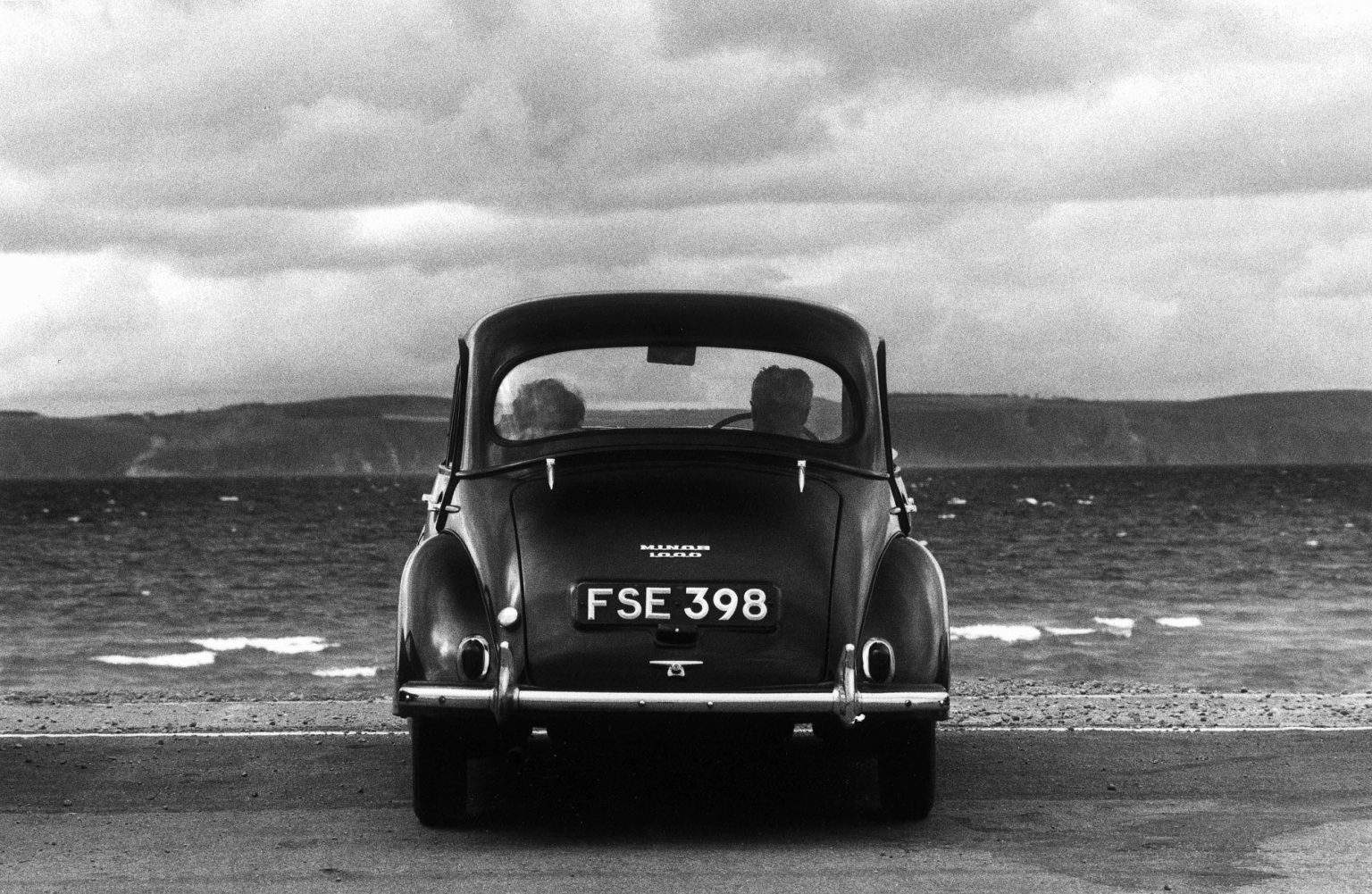
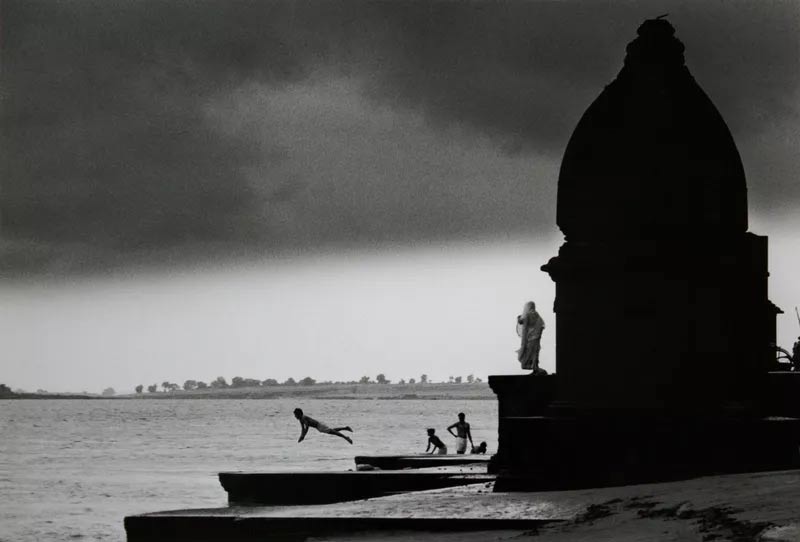 Gianni Berengo Gardin,
Gianni Berengo Gardin, Gianni Berengo
Gianni BerengoFinally, on the fifth floor here we go directly to India thanks to shots that immortalize villages, countryside, small towns, where farmers and their families live that the photographer gets to know. The reportage in India, between 1976 and 1977, was in fact the result of a personal project of the photographer, as an admirer of Gandhi, who urged Westerners not to stop at the idea of the India of big cities. It thus narrates the human presence that blends with the landscape, such as that man with his back turned who on an ox-drawn cart walks away among the trees, or the child who looks toward the lens in the middle of the countryside, or even the character against the light under an archway who seems to be conversing with a budgerigar on his hand. Thanks to Antonio Monroy, a great connoisseur of India, Berengo Gardin had the opportunity to explore a vast rural area between Delhi and Bombay and especially to get to know village life up close.
The exhibition concludes on the top floor, where portraits of the photographer are rarely seen and a screen broadcasting an interview with him by Maurizio Garofalo brings out his more intimate side.
Telling the entire career of Gianni Berengo Gardin in the Tower of the Castle of the Bishops of Luni would have been quite complicated given the vastness of his production (more than a million photographs and more than two hundred and sixty published books) and the limited space available, so the choice to focus on a single aspect is very appreciable. In this way the visitor takes a pleasant, well paced and measured itinerary through the works on display. The presence of an unseen gives the project an important prominence, but the other shots, selected in collaboration with the famous photographer’s daughter, also bring to life a tale (or five) in images of a given society and culture. A review that lives up to the relationship Castelnuovo Magra has built over the years with photography.
Warning: the translation into English of the original Italian article was created using automatic tools. We undertake to review all articles, but we do not guarantee the total absence of inaccuracies in the translation due to the program. You can find the original by clicking on the ITA button. If you find any mistake,please contact us.